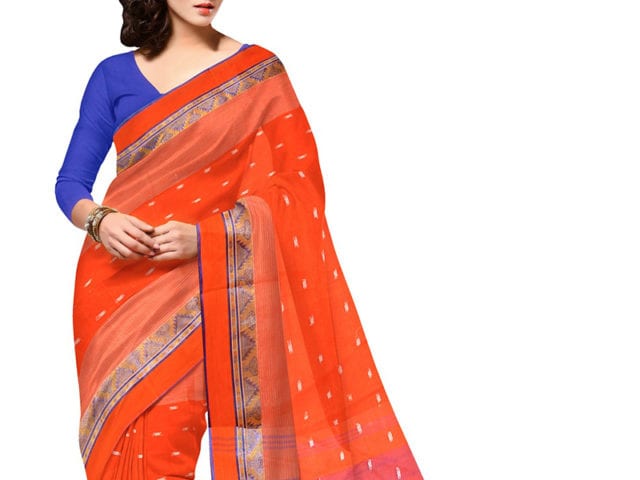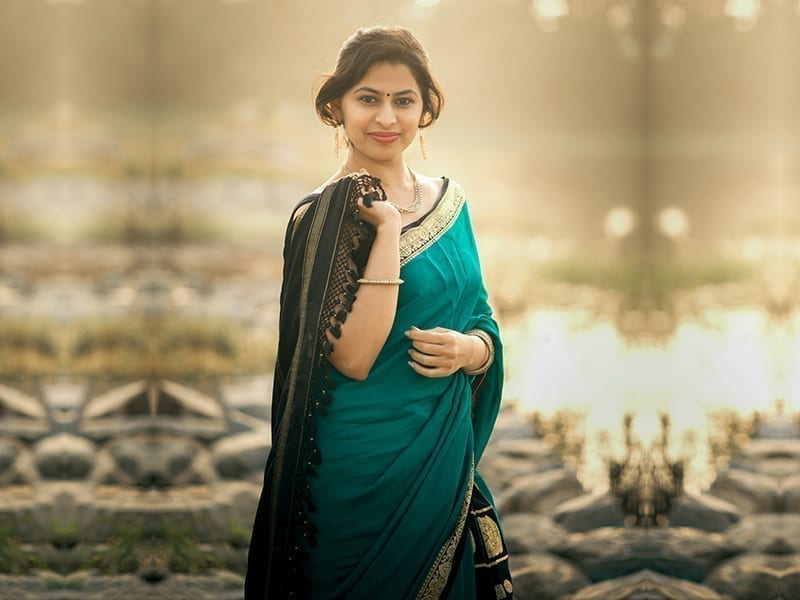The saree holds a special place in every Indian woman’s heart. Be it silk, cotton, georgette, chiffon or tissue, draping a saree brings out the feminine side in you. Often, handloom and vintage sarees become prized possessions as they’re handed down over generations or gifted to you on a special occasion like your wedding or anniversary. The fabric, print, the pallu or the self-designed blouse, there are plenty of reasons to fall in love with this graceful piece of clothing. But taking care of your precious sarees, organising them neatly and maintaining them can be tough.
Interesting Fact
Actress Mumtaz in Brahmachari (1968) gave the Indian audience the iconic orange saree draped in a unique style. It became a fashion statement and has been an inspiration for many designers and stylists alike.
From college farewells to weddings, a saree can help you step up your look with grace and ease. Expensive or not, sarees do need special attention and care. Even keeping one folded for too long can be disastrous. So how do you take care of your sarees? Here are some tips and hacks to help do just that!
1. Cotton Saree

Perfect for Summer, cotton sarees come in a variety of colours, prints and design. A few famous cotton sarees include Jamdani, Kota Doria, Khadi, Woven cotton, Batik, Sambalpuri and Vichitrapuri. You can keep it simple by adding a pair of kolhapuris or jazz it up with a contrasting blouse.
- Before washing a cotton saree for the first time, soak it for 10-15 minutes in a bucket of warm water mixed with rock salt
- Wash the saree separately as dark colours tend to bleed
- Use a mild detergent and avoid wringing it vigorously
- Dry your saree in the shade to avoid discolouration
- Starch it after every wash to retain the shine and colour
- Store the saree in an airy cupboard that is devoid of humidity and direct sunlight
Interesting Fact
In Bengal, there is a special way of wearing sarees, called ‘Ath Poure’, that is a lot different from the rest of India. It has box pleats in front, and the pallu comes from back to front. Netflix’s Bulbbul showcases some beautiful sarees worn in this style.
2. Silk Saree
Elegant and classy, silk sarees are much-loved for weddings, pujas and festivals. Assam, Art, Raw, Kanchipuram, Banarasi, Baluchari, Bomkai, Bhagalpuri, Tussar, Banglori, Kanjeevaram and Chanderi are a few favourite varieties of silk sarees. Anushka Shetty in Baahubali 2 wore stunning silk sarees of different varieties that made saree-lovers swoon with delight. Deepika Padukone’s look in Chennai Express consisted of simple yet elegant raw silk sarees. This saree can be tricky to drape but once you wear it, you look nothing short of royalty.
- Silk sarees are supposed to be sent for dry cleaning only
- Refold these sarees from time to time to avoid fading on the creases
- Do not store them with sarees of other materials. Store them separately
- Try to keep them wrinkle-free
- Always iron on medium heat and do not spray water while ironing as it might leave a stain
- Store them folded and wrapped in a pure cotton or muslin cloth as this will allow the saree to breathe
- Never hang a silk saree to dry in direct sunlight as that can cause the colour to fade
Interesting Fact
The Gujarati style of draping a saree with the vivid colours of Bandhani creates a stunning visual. The pallu or the loose end of the saree is often rested upon the right shoulder, which is its unique trademark.
3. Chiffon & Georgette Saree
Sridevi’s iconic blue chiffon saree in Mr India is unforgettable and certainly spiked a rise in the sale of chiffon sarees! Rekha’s beauty was enhanced by the chiffon sarees she wore in Silsila. These come in an array of colours and prints in the delicate fabric which is prone to damage.
- Chiffon and georgette sarees need to be hand-washed gently
- Wash them with cold water and a mild detergent
- Avoid hanging them for a long time as they might lose their shape
- Do not squeeze or wrap tightly
- Refold these sarees from time to time to avoid ripping on creases
Interesting Fact
North-Eastern states have variation in their saree draping styles. Phanek is an ethnic sarong worn by the Manipuri women. Innaphi helps to wrap the upper part of the body and is worn like a dupatta.
4. Tissue & Organza Saree
Organza is a thin, plain weave, sheer fabric traditionally made from silk. Lightweight and transparent, it has a fine texture and an attractive sheen. Tissue is woven out of a multitude of fibres among which one of the famous varieties is tissue silk. These are delicate fabrics that can be draped gracefully. One of the ways is draping it in nauvari style which when combined with these nauvari saree jewellery gives that perfect maharashtrian look.
- These are dry clean only clothing pieces
- It is best to keep these sarees folded and not hang them
- Store them by wrapping them in a muslin cloth
- Refold these sarees from time to time to avoid ripping on creases
Interesting Fact
The Nauvari saree is about 8 to 9 meters long and this style closely resembles a dhoti. This saree doesn’t require an underskirt (petticoat) and was worn by warrior women as they had to ride horses and fight with spears.
5. Net Saree
This sheer saree is a type of textile in which the threads are looped or knotted at the intersections creating large open spaces between the threads. From Rani Mukherjee in Kabhi Alvida Na Kehna to Katrina Kaif dancing to Teri Ore in Singh Is Kinng, net sarees have become a symbol of new-age sensuality.
- Dry cleaning is the most suitable option to wash net sarees
- Air them out before storing them
- Make sure to use a soft cloth storage box or use a saree bag
- Avoid using safety pins for net sarees as then can cause rips and tears
How To Remove Stains From Sarees?
- Treat stains as an emergency, don’t postpone dealing with them.
- For oily stains, sprinkle unscented talcum powder on the stain, and let it sit, so it absorbs the oiliness.
- Use a cotton ball dipped in pure (without oil) petrol to wipe off coffee, tea or gravy stains from your silk sarees.
- For food stains, let the stain dry completely. Gently rub and remove the dried stain. Use a baby’s brush to dust off the dried material. Blot with talc and wipe gently with a slightly wet satin cloth.
8 Not-So-Obvious Saree Care Tips
- Avoid perfumes, sprays or deodorants while wearing sarees.
- Sarees are vulnerable to oxidation and chemical exposure, so keep the mothballs away.
- Experts maintain that silk sarees shouldn’t be washed recurrently, or they would lose their sheen.
- Avoid washing or dry cleaning your rich silks after every wear.
- Some silk sarees, especially the heavy thread count ones, are traditionally washed at home.
- Avoid wringing or squeezing delicate sarees while drying.
- To dry without squeezing, roll your sarees in a clean, absorbent cotton cloth or a light, neutral coloured towel and press gently from all sides to remove water.
- Direct sunlight is not advisable for sarees and drying them in shade is a great option.

